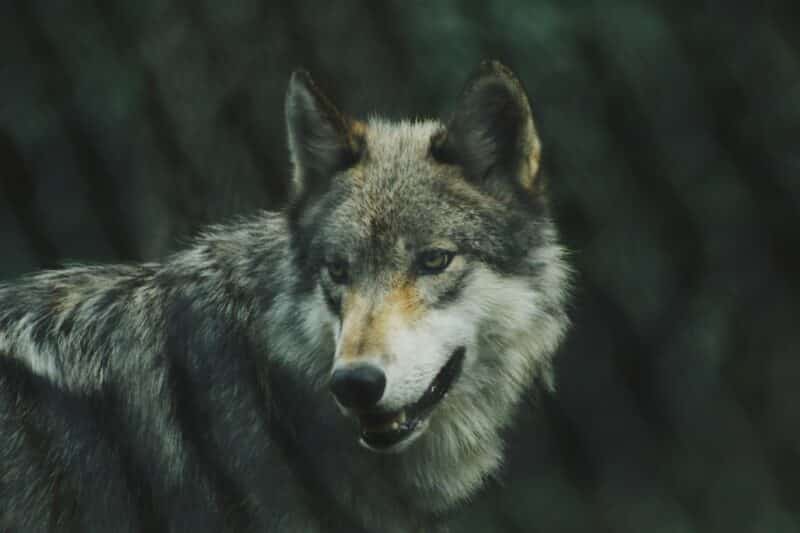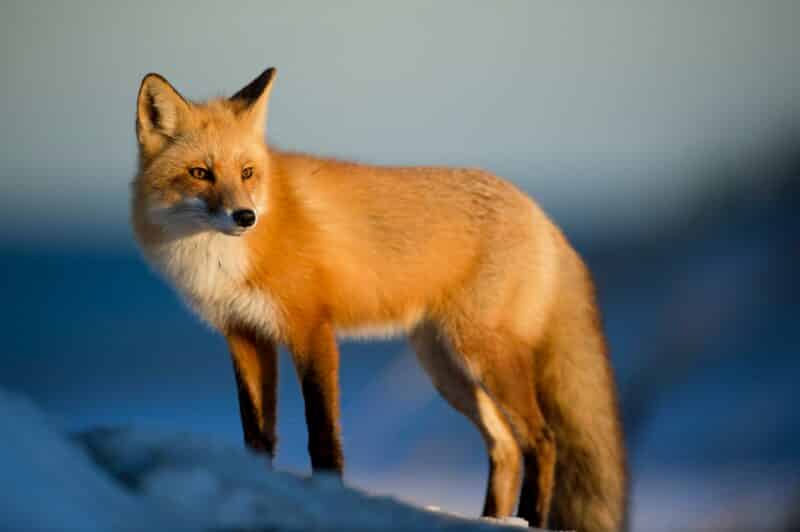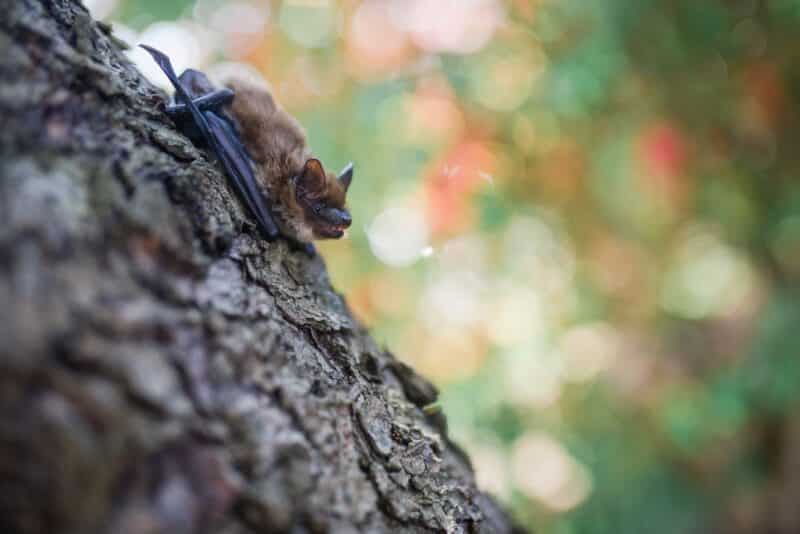Welcome to the fascinating world of animals and wildlife in Newfoundland and Labrador.
Newfoundland and Labrador, situated in the easternmost region of Canada and North America, occupy a distinctive geographical position. The province consists of two main parts: Newfoundland, an island in the Atlantic Ocean, and Labrador, a larger land area on the mainland of Canada. These two regions are separated by the Belle Isle Strait and are characterized by their roughly triangular shapes. The unique geography of Newfoundland and Labrador contributes to their varied climates and weather patterns.
This province serves as an ideal habitat for both native and introduced wildlife species. Visitors are indeed fortunate to have the opportunity to observe a diverse array of animals in their natural environments. Exploring the wildlife of Newfoundland and Labrador is not only intriguing but also inspires a desire to visit these locations and experience the province’s natural beauty firsthand.
Click below to jump to any section to learn more about the animals found in Newfoundland and Labrador:
The climate in Newfoundland and Labrador
Newfoundland and Labrador, located in eastern Canada, are geographically distinct: Newfoundland is an island in the Atlantic Ocean, while Labrador is part of the Canadian mainland. The climates in these two areas differ, characterized by moderately cold winters and pleasantly warm summers.
During the summer, Newfoundland enjoys average temperatures around 15 degrees Celsius. In contrast, Labrador’s mainland experiences cooler summers, with temperatures ranging from 5 to 10 degrees Celsius. Winters, however, are notably colder. In Newfoundland, temperatures typically stay above zero, while in Labrador, due to continentality, they can plummet to a chilling -7 to -40 degrees Celsius, depending on the region. Labrador’s winters are marked by significant snowfall due to the lower temperatures.
Interestingly, while Newfoundland’s climate is not predominantly snowy, the high snowfall in Labrador can extend to parts of the island. This phenomenon is due to the proximity and interaction of climatic conditions in these neighboring regions.
Labrador’s unique ecosystem, largely forested, supports a diverse range of wildlife, even in its cold winter climate. Meanwhile, Newfoundland, with its island geography near the Atlantic Ocean, provides an ideal habitat for aquatic species. The varied landscapes and tundra in both regions offer a hospitable environment for a wide array of fauna.
Animals found in Newfoundland and Labrador
The geographic positioning of the province within Canada creates an environment conducive to a wide range of animal life.
Labrador, with its dry and forested terrain, along with Newfoundland’s aquatic and temperate characteristics, collectively support a diverse array of wildlife. A range of both terrestrial and aquatic animals adds to the region’s allure. The animals inhabiting these areas are a mix of native species, naturally emerging populations, and those introduced by human activity.
Moose

The moose is the largest and heaviest member of the deer subfamily. Introduced to the island in the 20th century, the moose is notable for its broad, palmate antlers, in contrast to the more twig-like antler structure of other deer species. Humans hunt moose for food, a practice that has raised concerns about the species’ survival and potential risk of extinction. As herbivores, moose feed on a variety of aquatic and terrestrial plants. Unlike other deer, they are not known to move in herds.
Moose face threats from predators such as bears, wolves, other carnivores, and humans. They are solitary creatures, with calves staying with their mothers for about 18 months after birth before being pushed away to live independently. Moose exhibit aggressive behavior during their mating season, with males competing for access to females.
The term “moose” varies in different English dialects. In North American English, it is referred to as “moose,” while in British English, the same animal is known as an “elk.” It’s important to note that in North American English, “elk” refers to a different deer species altogether. The word “moose” entered the English language around 1606, borrowed from Native American languages.
Places to find Moose
The best place to see a moose is along the northern peninsula around St. Johns. Another good place to spot moose is in the Yukon territories.
American Red Squirrel

American Red Squirrels are distinguishable from other North American squirrel species primarily by their size. They are relatively smaller, measuring about 27-35 cm in length from head to tail. Their distinctive red fur with a white underbelly and unique behaviors also set them apart. In regions where they are native, they are commonly referred to as red squirrels.
Following their introduction to Newfoundland and Labrador, American red squirrels have become widely distributed throughout the province. They are abundant and generally not a conservation concern, having thrived and multiplied over the years.
These squirrels are primarily granivores, feeding mostly on the seeds of various fruits, including strawberries. However, they are also opportunistic feeders, adapting their diet as needed. White spruce seeds make up about 60% of their diet, but they also consume spruce needles, buds, and mushrooms. Red squirrels actively harvest spruce cones, storing them for winter sustenance and using the resources to support reproduction in the spring.
In terms of reproduction, American red squirrels exhibit spontaneous ovulation, with females entering their estrus cycle for only a single day. To mate, the female leaves her territory to signal her readiness for breeding. This prompts a chase among the males, who take turns mating with her, leading to gestation. These squirrels typically build nests in tree branches using grass and other materials.
Territorial by nature, red squirrels usually live solitarily except during mating seasons and when mothers are raising their offspring. Juvenile red squirrels face the challenge of securing a territory by their first winter, a crucial factor for their survival. While they experience high mortality rates early in life, their survival skills improve significantly after about three years.
Places to find American Red Squirrels
Regarding their habitat, American Red Squirrels can be found in various locations in Newfoundland and Labrador, including Terra Nova National Park, where they coexist with other wildlife.
Labrador Wolf

The Labrador wolf is a subspecies of the gray wolf. Its coat varies in color, ranging from dark grey to white. This species has emerged naturally in the region, with its population growth significantly spurred by the abundance of caribou. Interestingly, the rise in the number of these predators has not led to a noticeable decline in the caribou population. The presence of the Labrador wolf in Newfoundland was officially recognized in 2012.
In appearance, the Labrador wolf is similar to a coyote but can be distinguished by its larger canines. This feature sets it apart from coyotes, especially considering its relatively recent establishment in the area.
Places to find Labrador wolves
Regarding their habitat, although information on the Labrador wolf is somewhat limited, they can be found in specific locations such as Terra Nova National Park in Newfoundland and Labrador. This region provides an environment conducive to their survival and offers opportunities for sighting these unique animals.
Newfoundland Pine Marten

The Newfoundland pine marten, a unique subspecies of the American marten, is exclusively found on the island within the province of Newfoundland and Labrador. Recognized as one of the most endangered species, it has been under the protection of conservation organizations for an extended period. This subspecies has been geographically and reproductively isolated from its mainland counterparts for over 6,000 years. While it shares physical similarities with mainland martens, such as dark-brown fur, it is slightly larger.
The Newfoundland marten is predominantly found in the western part of the island, inhabiting densely forested areas. Due to their larger size relative to other marten species in the region, they require extensive home ranges. Their territorial behavior and habitat preferences vary with ecological factors, and they demonstrate fidelity within their chosen home range. The dense forestry provides them with necessary cover and protection from predators.
As carnivores, Newfoundland martens primarily feed on small mammals, such as meadow voles. In winter, they switch to preying on snowshoe hares, which are more abundant, while meadow voles are less common in forested areas.
The population of Newfoundland Martens has been declining since the 1800s, primarily due to over-trapping. This decline has led to a reduction of almost 70% in their numbers, classifying them as endangered and warranting protection under the Species at Risk Act and other wildlife conservation measures.
Places to find Newfoundland pine martens
Despite their endangered status, Newfoundland pine martens can still be observed in areas like Terra Nova National Park, where they coexist with other wildlife species of Newfoundland and Labrador.
Red Fox

The red fox, notable as the most expansive and largest of the fox species, has seen its range grow in tandem with human expansion. In various areas, it was introduced to manage populations of birds and native mammals. Commonly, male red foxes are referred to as ‘tods,’ females as ‘vixens,’ and their young as ‘kits.’
Physically characterized by their robust bodies, short limbs, and a lush tail approximately half their body length, Red Foxes are highly adaptable to diverse geographical environments. They mark their territories using urine and typically live in social groups. Within these groups, vixens are responsible for caring for and protecting their kits, often until they reach adulthood.
Red foxes are omnivorous, feeding on a diet that includes both plants and animal flesh. They usually hunt in the early mornings and late evenings, showing a strong protective instinct over their food, often guarding it against larger animals. They exhibit a unique behavior of hunting live prey, which they sometimes bring back for their kits to play with.
In the wild, red foxes often assert dominance over other fox species, competing for both food and territory. Despite their capabilities, red foxes are vulnerable to predation by wolves.
Places to find Red Foxes
In terms of habitat, red foxes can be found in areas like Salmonier Nature Park in Newfoundland and Labrador.
Little Brown Bat

The Newfoundland little brown bat is a native species in Newfoundland and Labrador, known for its elusive nature. Studying these bats is challenging due to their nocturnal habits and constant movement. To facilitate their study, an electronic device called a bat detector is used, which picks up the sounds made by these flying mammals.
In Newfoundland, little brown bats are commonly found around human habitations, as well as in natural settings like caves and trees. Their shelter preferences change with the seasons. In summer, they are often found resting in trees and buildings, while in winter, they seek out hibernation spots in caves, tunnels, or unoccupied buildings to escape the cold and frost.
These bats primarily feed on insects and are remarkably efficient hunters, capable of catching a large number of insects in a short time. They typically hunt before sunrise and after sunset, consuming insects to accumulate fat reserves for the winter months. Habitat availability poses a threat to their population, as suitable trees and caves are becoming scarce.
The Little Brown Bat has a lifespan of up to 10 years. In appearance, their fur color ranges from pale to reddish-brown, and they measure approximately 9cm in length from head to tail.
Summary of Animals and Wildlife in Newfoundland and Labrador
If you enjoyed reading about the animals in Newfoundland and Labrador, check out animals in Illinois and Manitoba next!
Join our Forum for free today!

- These are The 5 Largest Great White Sharks Ever Recorded - July 19, 2024
- The Surprising Benefits of Big Game Hunting - July 18, 2024
- $100k+ Hunting Experiences The Most Expensive Animals to Pursue - July 17, 2024


